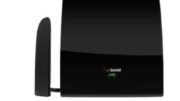The answer is “no,” but not for the reason you think.
Before 2014, cellular signal booster companies would be more than happy to sell you an inline amplifier for their products. The only problem was, if you listened to your cell company you couldn’t use it. In fact until 2014 no cell provider officially allowed cellular signal boosters.
That all changed with a landmark FCC rule developed by a group that included Wilson Electronics (parents of weBoost) and several top cell companies. Starting in February, 2014, the rules would change. Here are the basics, which still apply today:
- Major cell providers agree that using a cell booster isn’t a violation of your terms of service.
- However, you as a user have to register the booster.
- Cell booster manufacturers would only sell boosters in kits that include everything you need.
- Inline amplifiers would be illegal unless certified by the FCC.
That’s where we find ourselves today. There is only one booster kit with an inline amplifier, the WilsonPro 1050, and its amplifier only works with that one system. This brings up a really good question:
Why does the FCC hate inline amplifiers?
“Hate” is such a strong word. The FCC just doesn’t trust that they will be used right. Boosters are sold in kits for a reason. The kit is tested to make sure that it won’t interfere with the cell network in place. Adding an amplifier could make it impossible to guarantee that. You just know that if you could buy cell amplifiers separately, some guy would put ten of them in a row. Then the cell network would crash and the guy would be in trouble with his neighbors. You don’t want to be that guy. The FCC has your back.
Can’t you just use some other sort of amplifier?
Well, yes you could. But you’d need a bidirectional amplifier that operates using 75 ohms on the bands between 600 and 2200MHz. Here’s one, but it’s over $6,000 and requires an FCC license. That seems like a little bit of overkill for a $500 cell booster.
You could try stacking cheap amplifiers going two different directions on the same line but chances are it wouldn’t work. It would introduce more noise into the line and the amplifiers would interfere with each other.
Even in a best case scenario where this does work, the cell booster would hopefully step down its power until there was no benefit to all your hard work. In a worst case scenario of course you’d cause feedback at the cell site and the whole neighborhood would go down. And then, as I said above, you’re that guy. Don’t be that guy.
The best solution: Choose the right booster system
weBoost, SureCall, and our other partners have booster systems that are designed to cover spaces up to 100,000 square feet. You can get a custom designed system with multiple boosters that work together. In a real “worst-case” scenario, you can work with a carrier to bring in an carrier DAS which is like your own personal cell tower.
Of course all these solutions take money. None of them are really inexpensive. The high cost drives people to try other solutions. I get that. However, using the cell booster the way it’s intended really is the best solution. In fact, it’s the only solution you should really consider.





